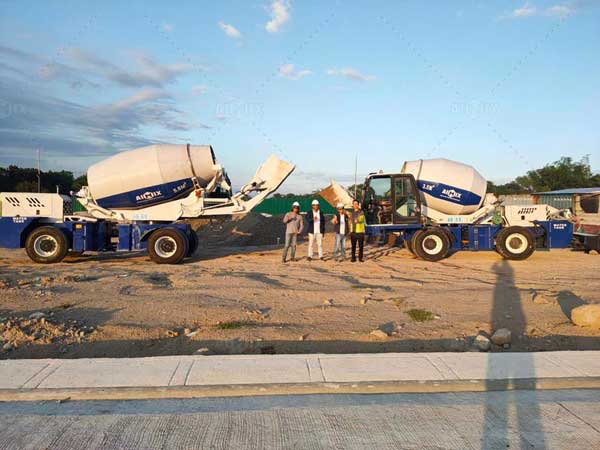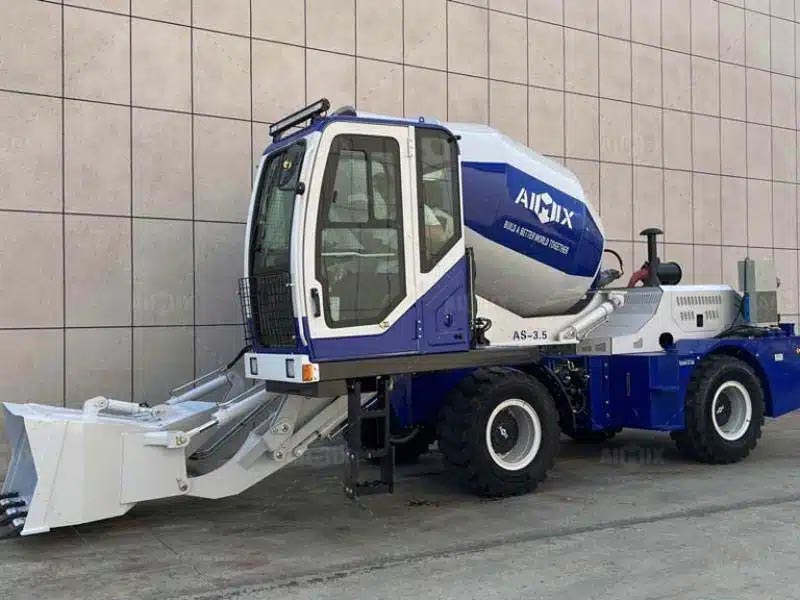Self-loading concrete mixers are versatile machines used in construction projects for their ability to mix, transport, and discharge concrete. Let’s delve into the operating speed and turning radius of these efficient equipment.
Self-loading concrete mixers are essential tools in the construction industry, offering a convenient solution for mixing and transporting concrete on-site. However, understanding their operating speed and turning radius is crucial for optimizing their performance and ensuring safety on the job site.
Operating Speed
Self-loading concrete mixers feature variable operating speeds to accommodate different job site conditions and concrete mixing requirements. The self loading mixer machine is equipped with powerful engines and hydrostatic transmission systems that allow operators to adjust the speed according to the task at hand. The operating speed of a self-loading concrete mixer typically ranges from 0 to 30 kilometers per hour (0 to 18.6 miles per hour), providing flexibility and control during operation.

Adjustable Speed Settings
Operators can adjust the operating speed of a self-loading concrete mixer using intuitive controls located in the operator’s cab. Depending on factors such as the type of concrete being mixed, the distance to be traveled, and the terrain conditions, operators can select the appropriate speed setting to optimize efficiency and productivity. Lower speeds are typically used during concrete mixing and loading, while higher speeds are employed for transporting concrete to the desired location.
Hydrostatic Drive System
The operating speed of a self-loading concrete mixer is facilitated by its hydrostatic drive system, which utilizes hydraulic pressure to transmit power from the engine to the wheels. This system offers precise control over the speed and direction of the mobile self loading concrete mixer, allowing operators to maneuver with ease on rough terrain and in confined spaces. The hydrostatic drive system also contributes to the overall efficiency and reliability of the mixer, ensuring smooth and consistent performance in various operating conditions.
Turning Radius
The turning radius of a self-loading concrete mixer refers to the minimum space required for the machine to execute a full turn while maintaining control and stability. This parameter is critical for maneuvering the mixer in tight spaces and around obstacles on the job site. Self-loading concrete mixers are designed with compact dimensions and advanced steering systems to achieve a tight turning radius, enabling operators to navigate congested work areas with ease.

Articulated Steering Mechanism
Self-loading concrete mixers typically employ an articulated steering mechanism, which allows the machine to pivot around a central point between the front and rear axles. This design feature reduces the turning radius of the mixer, enabling it to make sharp turns and maneuver in confined spaces without the need for excessive maneuvering or repositioning. The articulated steering mechanism also enhances stability and control, ensuring smooth and precise operation in challenging terrain conditions. Explore more info about mixer here: https://aimixglobal.com/.
Maneuverability in Confined Spaces
The compact size and tight turning radius of self-loading concrete mixers make them ideal for work sites with limited space or restricted access. Operators can maneuver the mixer with confidence around obstacles such as buildings, scaffolding, and other construction equipment, minimizing the risk of accidents or damage to property. The ability to navigate tight spaces efficiently enhances productivity and reduces downtime, ultimately contributing to the success of construction projects.
In conclusion, the operating speed and turning radius of self-loading concrete mixers are essential factors that impact their performance and versatility on the job site. By understanding these parameters and leveraging the advanced features of the self loading concrete mixer truck, operators can maximize efficiency, productivity, and safety in concrete mixing and transportation operations. Investing in self-loading concrete mixers with adjustable speed settings, hydrostatic drive systems, and articulated steering mechanisms ensures smooth and reliable performance in various construction applications.